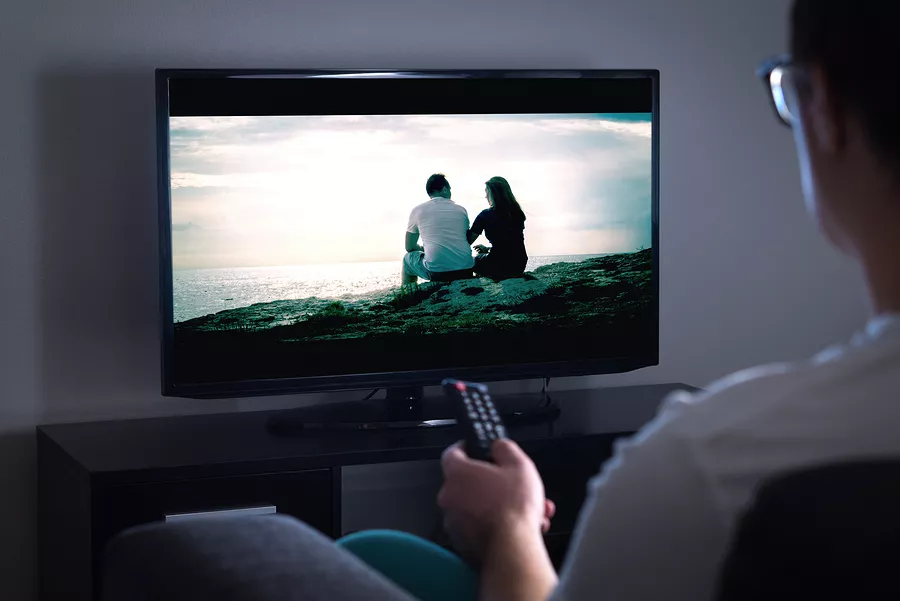How to increase your Netflix stream quality & stop buffering
Home & Lifestyle Blog | MATE, Entertainment & Internet Blog | MATE | 20 October 2021

When you’re trying to watch a movie or TV show on Netflix, the last thing that you want is for it to buffer every few minutes. If your Netflix buffering sounds like an all too familiar scenario, then don’t worry!
We have some simple tips and tricks to help you improve your home Wi-Fi network or even your internet connection so that Netflix buffering doesn’t happen anymore!
Check your home Wi-Fi connection
First, look at the strength of your Wi-Fi signal – remember, your Wi-Fi connection and your internet connection are two separate things. Even if you think that your Wi-Fi signal is pretty good where you are sitting or standing right now, Netflix requires a download speed of 25 Mbps for high-quality video streaming to avoid Netflix buffering. As a comparison, this is much more than other streaming services apps like YouTube, so if your Netflix keeps buffering, then it could be a home network issue.
Therefore, if you want to watch Netflix without lag or buffering, you need a strong Wi-Fi connection and a good internet connection. If your Wi-Fi signal strength is low, it would be best to try moving closer to your router or upgrading the router you are using – a Mesh Wi-Fi router will provide you with the best solution for complete in-home Wi-Fi.
How much of a difference this makes if your Netflix keeps buffering will largely depend on your home’s size and layout and your internet connection speed.
If your Wi-Fi is good, find the cause of Netflix buffering – check your Netflix app
If your Wi-Fi signal is adequate or not the issue, you’ll now need to make sure that the speed of your internet connection is fast enough to run Netflix on your device directly.
Firstly, check the internet speed that your internet service provider provides. If you’re not sure how to do this, Google the term ‘How to test my internet speed‘, which should bring up all of the information on how to measure it yourself.
At least 25 Mbps is required on your home network for high-quality video streaming on Netflix – if you are unsure of what speed you are on, check with your internet service provider.
The second thing is, of course, adjusting the quality on Netflix via the Netflix website or Netflix app! Go to Netflix and log in. Then on the Netflix home screen, click on “Your Account” at the top right-hand side of the Netflix account home screen to access the system settings. You can choose different video qualities for playback settings on your home network from there – it’s super easy!
We recommend choosing Super HD as your preferred viewing option if possible because it tends to look better on a smart TV than HD and also has fewer buffering issues than SD (standard definition).
Suppose you happen to be watching Netflix with multiple people simultaneously. In that case, we suggest having everyone adjust their personal preferences within Netflix, so they don’t have to deal with buffering on your smart TV as well. If you stream Netflix via a video game console, then this will work for you as well.
Finally, make sure that your Netflix app is up to date. Netflix always updates their apps with bug fixes and performance improvements. Sometimes, these can improvise the video quality and avoid the need to try a different internet connection or streaming media player. This even applies to using a game console to watch Netflix rather than a Windows computer, Windows PC or smart TVs.
Is your internet service provider and internet connection good? Check these other factors
There are also other factors involved when it comes to stream Netflix without buffering and at the best video quality. Constant buffering of Netflix can also be affected by:
- The number of people in the household who will be using streaming video via Netflix at any given time and the stream quality;
- What type of traffic they’re running when streaming video (for example, browsing pages vs downloading big files vs streaming Netflix vs online gaming);
- The age of your internet infrastructure such as your wireless router, modem etc.;
- How far away your wireless router is from where you are streaming video running Netflix;
- What kind of interference exists between the location where you’re using Netflix and your Wi-Fi wireless access point;
- Your internet connection and its setup; are you using a wired connection, a wireless connection, or do you have a slow internet connection speed.
Try connecting your TV or device via an Ethernet cable
You can also try connecting your TV or device to your router via an Ethernet cable for a more stable connection. This is especially helpful if multiple people will be using Netflix simultaneously because it creates dedicated bandwidth between the internet and Netflix – no fighting over Wi-Fi. It also means you can continue to use your home internet service and home network as usual without any interference.
This is the best option if you are streaming Netflix on a smart TV that doesn’t have Wi-Fi or can’t stream Netflix without constant buffering. Just make sure your router has an Ethernet port to plug into!
Enjoy buffer-free movies and TV shows!
We hope that for all those suffering through long load times and fuzzy images on Netflix, these helpful tips can help fix any problems so you can get back to enjoying your favourite show in high definition glory!

